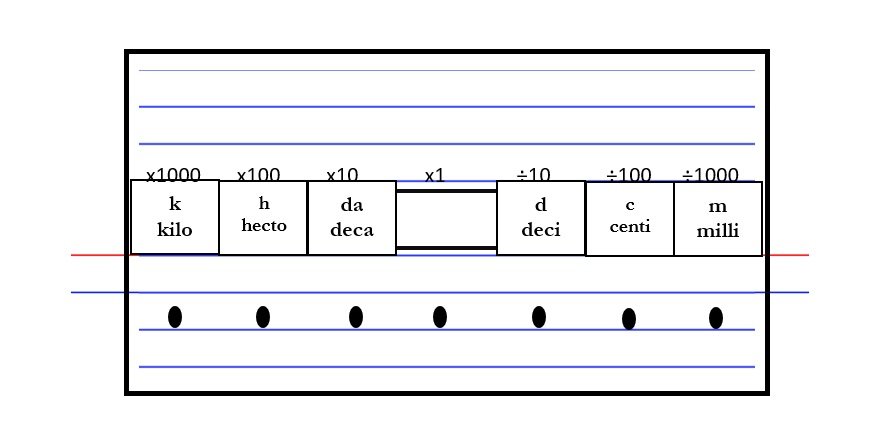Taking Time to Teach the Metric System
I can remember many years ago, when my own child was in middle school, having a conversation with them about the metric system. It started innocently enough. They had asked what a gram was and I had obnoxiously and sarcastically replied “1/1000 of a kilogram.” After rolling their eyes and telling me in an exasperated voice that was NOT what they meant, they then wondered how I’d known it was 1/1000. Thus, a conversation on the metric system. My mom, who was listening in at the time, chimed in with a helpful “I don’t know why you bother. No one uses the metric system anyway.” Insert gasp of horror here.
While I suppose it’s true that our everyday dealings with measurements in America requires us to more routinely understand the customary system than the metric system, there is a great deal of use for the metric system, especially in science. It is the internationally accepted system of measurement in science so there’s great value to explicitly teaching our science students how to use the system, then continuing to use it in our science practice, even at the middle school level.
Plus, who among us can deny the beauty and pure elegance that is the base-ten foundation of the metric system? A simple glide of a decimal point this way or that and voila! The value of the number has instantly changed! None of this multiplying by 3 or dividing by 12. No! Just a flip of the little decimal and suddenly my liters are deciliters… my kilometers are hectometers… my…
Okay, maybe I find the metric system slightly more compelling then most but truly, it is a pretty nifty way to convert measurements, once you know what you’re doing.
Teaching physical science in middle school deals with a lot of measurement and many of the most widely used principles and formulas rely on a working knowledge of the metric system. And, even though some math standards address the metric system earlier on, many students enter the middle school science classroom without a working knowledge of how to convert units and take measurements in metric. This is why I take the time to teach a short unit on the metric system before diving into any of my physics units.
What I include with my metric system unit…
When I bring in a unit on the metric system with my middle school science students, I don’t want it to be so long that it eats into a lot of our academic time. After all, this unit technically doesn’t meet any of the middle school science standards, but it does lay a foundation and I think that’s important. My unit never takes more than a week and during that time we not only dive into unit conversions, we also practice with measurement tools that might be unique to the science classroom. These include graduated cylinders, beakers, and scales.
I also use these lessons as an opportunity to cover the differences between measuring mass and volume or mass and weight. We discuss base units and prefixes and even create a handy tool that helps make conversions between larger and smaller units much easier. Students complete a few measurement labs focused on proper use of the equipment (like looking for the meniscus in the graduated cylinder) and determine how to calculate volume using the principle of displacement.
Taking a week to give direct instruction about the metric system ultimately saves me time down the road. Students are prepared to deal with tricky conversions and difficult measurements, plus their data is far more accurate thanks to their practice with the tools beforehand. I highly recommend taking the time to teach the metric system, before diving into your mathematic heavy science units!
Interested in checking out the metric system unit I use? Take a look at the full unit here…


